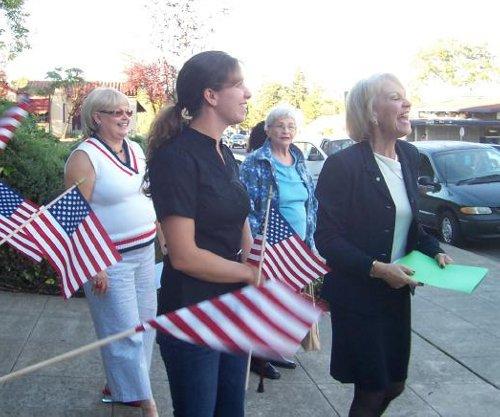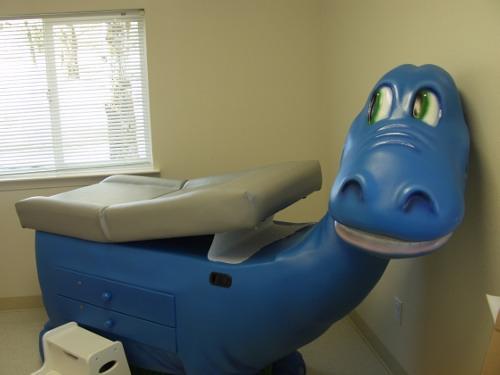LAKEPORT – Lake County's superintendent of schools said he erred in signing a document with incorrect information that allowed a former administrator to apply for a credentialing program for which she was not eligible.
The issues were included in the latest grand jury report, released in July, and addressed in the Lake County Office of Education's formal response to the grand jury, released last month.
In that response to the grand jury, Dave Geck admits mistakes and misunderstandings, but also points to what he said are inaccuracies in the grand jury's report.
District Attorney Jon Hopkins confirmed that the grand jury contacted him about the case, which he investigated. Hopkins said he found no evidence of wrongdoing.
The grand jury asked Geck and his office to explain why he signed the document and provided inaccurate information in last year's response, and why he allowed Allison Hillix, the former director of career technical education, to remain in her job without immediately terminating her when it was discovered she didn't hold the appropriate qualifications.
Hillix, who no longer works for the Lake County Office of Education, would not comment when contacted by Lake County News.
The Lake County Office of Education's responses to the report included an admission that Geck showed “poor judgment” in not checking the accuracy of dates on an application Hillix made for a credentialing program.
The grand jury also recommended that all expenses reimbursed to both Hillix and Geck be audited. The report stated that Hillix was reimbursed $10,000 in expenses in an eight-month period.
Geck said he discussed the report with his board of trustees, who participated in the formal response.
“This reflects on the whole Office of Education,” said Geck.
The agency – which has an annual budget of about $16 million, $2 million of which is for supporting districts in business and human resources – has 120 employees, include 25 full-time staffers in the main office. It also has many part-time staffers.
It's been the focus of two years of grand jury investigative efforts and was mentioned in the last two grand jury reports.
“The initial complaint received by the Grand Jury suggested that a high-ranking administrative position was given to an individual that received administrative credentials under false pretenses,” the grand jury stated in its recent report.
In that report, the grand jury faulted Geck for signing a document attesting to the required teaching experience for Hillix, who was applying for a certification program. In her position she oversaw ROP courses, programs and services in the agency.
The certification would allow Hillix to be at an administrator level, said Geck. Without it, she could still be a manager, which would be at a lower step and pay level.
“I never denied that I messed up and made a mistake” on the certification of experience, Geck said.
Geck said Hillix had filled out the form and then had him sign it. “I didn't do a good job of checking that.”
Geck gets plenty of documents to sign, but said that's no excuse.
“When you make a mistake you have to pay the price,” Geck said.
As a result, Geck said his office now has a new administrative policy in which two administrators must verify such a form before it's signed. “That should not happen again,” said Geck.
The investigation by the grand jury's Public Services Committee also revealed that Geck authorized the $10,000 in expense reimbursements to Hillix.
The grand jury report further stated that Hillix had been reimbursed for alcohol purchases while at a conference, but the district's director of business services reported that no such alcohol purchase were reimbursed based on her review of the documentation, according to the district's response to the report.
Geck said the Lake County Office of Education has added a per diem limit. He said the change wasn't necessarily due to the grand jury's investigation, but rather was part of an effort to reduce expenses.
The grand jury report also faulted Geck for saying he didn't have the form in question, which the office's human resources director, Ed Skeen, later produced.
Geck said the issue was due to a misunderstanding, because he thought they were talking about another document. The formal response to the grand jury also maintains that the issue came down to a misunderstanding.
Last year, Geck's office had sent the grand jury a brochure on the Sacramento State program to clear up the misunderstanding. He said they plan to share the document with the grand jury again this year.
The grand jury also stated that Hillix was allowed to resign two months after the credential was invalidated, but Geck said that's incorrect. He said the grand jury had Hillix's personnel files and the resignation dates, along with the district's personnel policies, which his office sent them.
On Aug. 28, 2008, the California Commission on Teacher Credentialing notified Geck's office via e-mail that the state university was requesting the credential be denied, according to the response to the grand jury's finding.
At the same time, Hillix discovered her credential was no longer listed on Sacramento State's credentialing Web site. Geck said she investigated appealing it at the start of September. The grand jury's findings held that Hillix should have been immediately terminated.
Skeen then sent the grand jury a notice on Sept. 10, 2008, saying that the credential was invalidated, Geck said.
Hillix wasn't able to file an appeal due to a statute of limitations issues. “Once she wasn't able to appeal she resigned,” said Geck.
It was 36 days between the time Geck's office received notice that the credential was being invalidated to Hillix's resignation, not two months as the grand jury said, according to the Lake County Office of Education's response to the findings.
Based on the Lake County Office of Education's attorney's opinion, “our delay in terminating the employee was based on providing the employee with sufficient time to pursue an appeal, and to not compromise any 'due process' rights that the employee might have,” the response stated.
A document provided by Skeen showed that the career technical education director position, which was paid $82,325 annually, became vacant upon Hillix's resignation on Oct. 6, 2008, after she was in the position for 217 days.
Geck said she continued nonadministrative employment “on a very limited, temporary, timesheet basis to complete some projects for the ROP office,” and is no longer employed in any capacity within the office.
During the investigation, the grand jury drew on its rarely used subpoena power to call in Geck and several others. He said he doesn't know how many subpoenas were issued, but became aware that some people in his office were called to testify more than once. In all, the grand jury report noted it drew from 42 hours of testimony in its final report.
Geck's testimony, which was the basis of this year's grand jury report, actually was given in the first half of 2008 under subpoena, he said.
Based on the grand jury's report 2007-08 report, the District Attorney's Office subpoenaed district documents and said they would follow up. Geck said if the document signing had been fraudulent, he would have heard from the District Attorney's Office.
Hopkins said his office, along with county counsel and the presiding judge, act as advisors to the grand jury.
The grand jury, Hopkins said, “did come to us and ask us to investigate potential criminal charges.”
He continued, “We did a lot of extra investigation beyond what they had done in regard to that and determined there was no basis for filing criminal charges.”
Geck said he doesn't believe further grand jury investigations are in the offing. “As far as we know this is a final report.”
He said he felt the structure of the investigation created an adversarial process, and said he would have preferred it if people who had issues with the agency came to him directly.
“I'm just looking for a way to make this a positive process,” said Geck.
He added, “Our goal is to get better and improve at all times.”
Geck said he doesn't want the mistake he made to denigrate the entire Lake County Office of Education, and he's concerned about the community's perception. “We have great people doing great programs.”
He continued, “I did make a mistake but I don't want to make that an excuse.”
The Lake County Office of Education also is implementing grand jury recommendations, including explaining the issues with the credential program and undertaking an audit of the expenses reimbursed to both Geck and Hillix, according to its response document.
In September 2008 the Lake County Office of Education initiated an audit on their own, Geck said. That audit was included in the agency's regular annual audit.
That audit, by Robertson & Associates, was expected to be done by this past Sept. 4. However, Geck said that the auditing firm is backlogged and the document hasn't yet been delivered, although he's expecting it soon.
Geck asserted that, overall, this latest grand jury report was “positive by omission,” since many issues mentioned in last year's report didn't arise in this latest report.
Brock Falkenberg now holds Hillix's old job.
“I think things are going well,” said Geck.
All of the ROP programs got a 15 percent cut in 2008-09 and are looking at another 5 percent cut for 2009-10. Geck said he hopes the programs aren't further reduced.
E-mail Elizabeth Larson at This email address is being protected from spambots. You need JavaScript enabled to view it. . Follow Lake County News on Twitter at http://twitter.com/LakeCoNews and on Facebook at http://www.facebook.com/pages/Lake-County-News/143156775604?ref=mf .
















